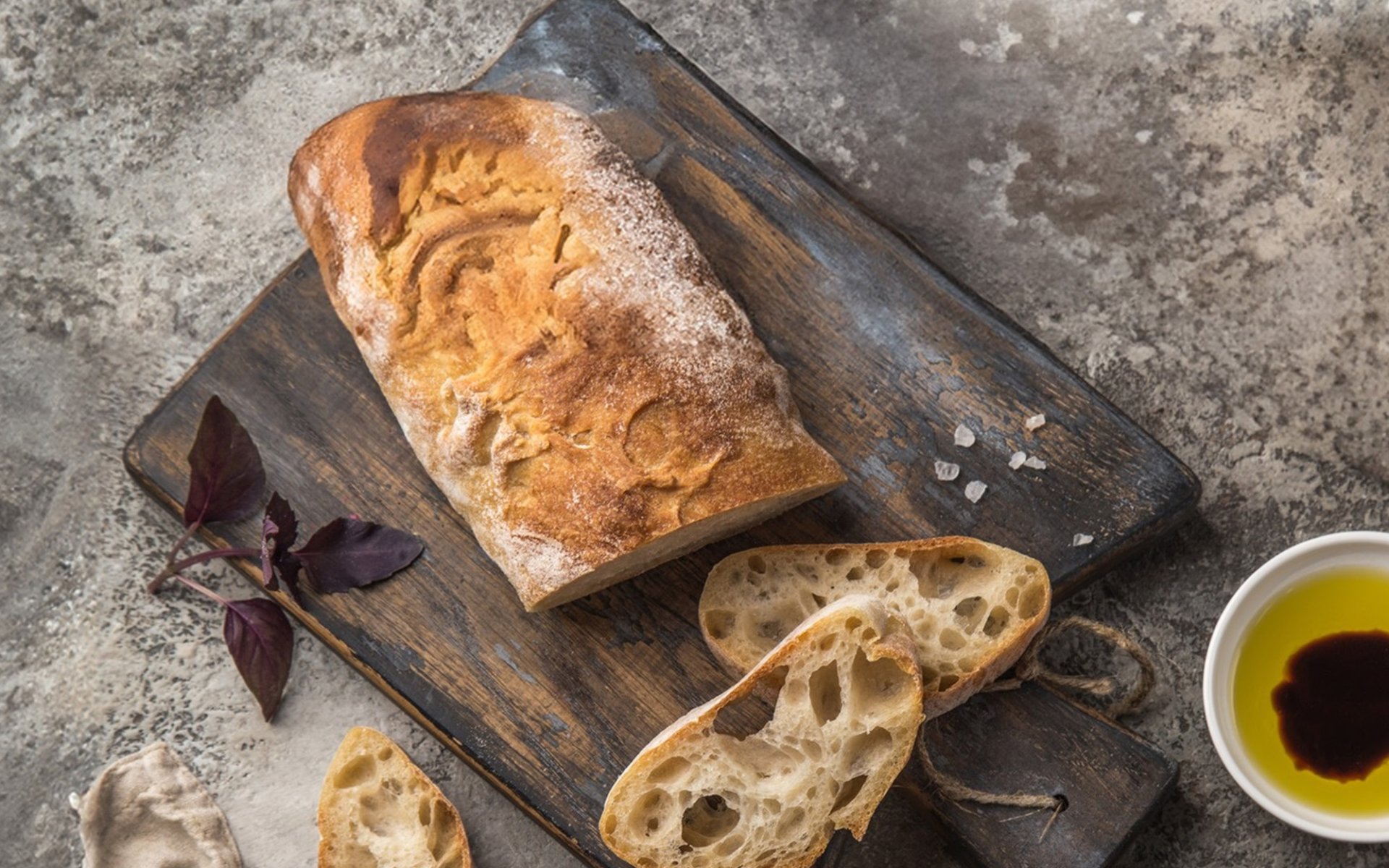Ciabatta

Italy is renowned for its diverse cuisine. Beyond pizza and pasta, many types of bread also enjoy widespread popularity. One such bread is Ciabatta, a traditional loaf created to compete with the French baguette.
From Inspiration to Slipper Shape
The origin of Ciabatta dates back to the late 20th century. Legend has it that as French baguettes gained popularity in Italy, Arnaldo Cavallari, a baker from Adria in the Veneto region, sought to develop an Italian bread that could rival the baguette. He feared that the French baguette's popularity would displace traditional Italian breads.
Cavallari used the same main ingredients for Ciabatta as for baguettes: wheat flour, water, yeast, and salt. However, he varied the fermentation and baking times. Ciabatta requires a longer fermentation period and a higher baking temperature. As a result, Ciabatta has more moisture, uneven air pockets, and a softer texture than a baguette. Additionally, Ciabatta's shape is distinct, being a wide rectangular loaf.
The name Ciabatta means slipper in Italian. Cavallari named the bread this because he found its flat, elongated shape resembled his wife's slipper.
From Italy to Global Popularity
Over time, Ciabatta gained popularity throughout Italy, leading to its commercial production. In 1980, bakeries and large supermarkets in various cities began to recognize Ciabatta's potential, leading to its widespread production and distribution. This marked the beginning of Ciabatta's spread around the world.
Ciabatta was introduced to the United Kingdom in 1985 by Marks & Spencer. It then made its way to the United States in 1987 by Orlando Bakery, a Cleveland-based company. Orlando Bakery brought Italian bakers to develop the product, leading to large-scale production in the US. In addition to fresh bread, they also successfully developed frozen Ciabatta.
Adaptations and Serving Suggestions
Over the years, Ciabatta has been widely adapted to suit different tastes and preferences. While the original recipe uses simple ingredients like flour, water, yeast, and salt, modern bakers experiment with adding various ingredients such as herbs, cheese, olives, and even grains to achieve diverse flavors and textures.
Ciabatta can be enjoyed in various ways. In Italy, it is often served as an appetizer, dipped in olive oil. Another equally popular dish is Panini, a sandwich filled with meats and cheeses.


